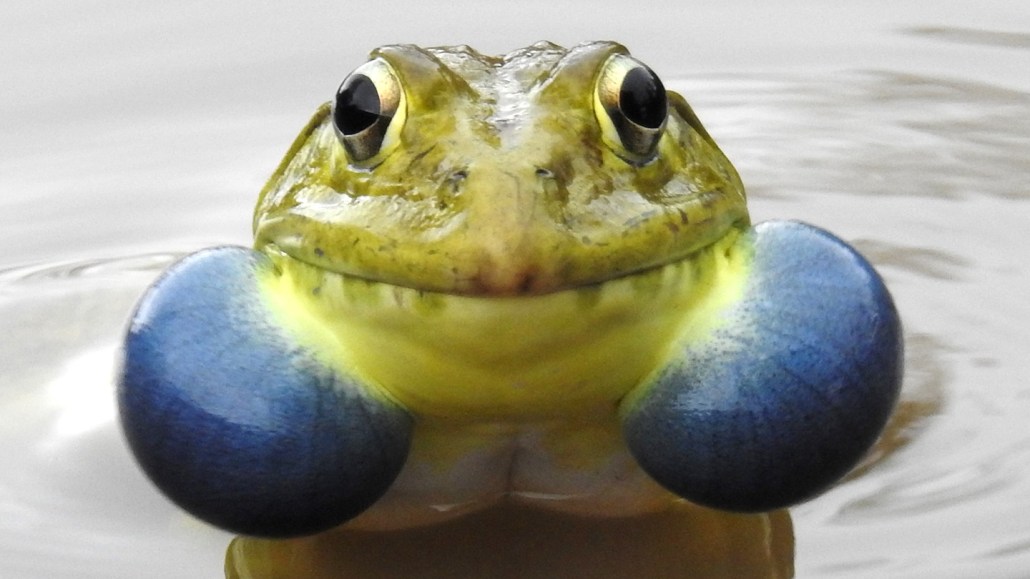Frog ribbits erupt via an extravagant variety of vocal sacs
Blue pop-out poofs, headside balloons — the diversity is astounding

A pair of blue bulges puffs outward as a male Indian bullfrog (Hoplobatrachus tigerinus) calls. Side puffs are just one of 20 patterns that male vocal sacs evolved for amplifying the calls of frogs and toads.
Dr. Raju Kasambe/Wikimedia Commons (CC BY-SA 4.0)